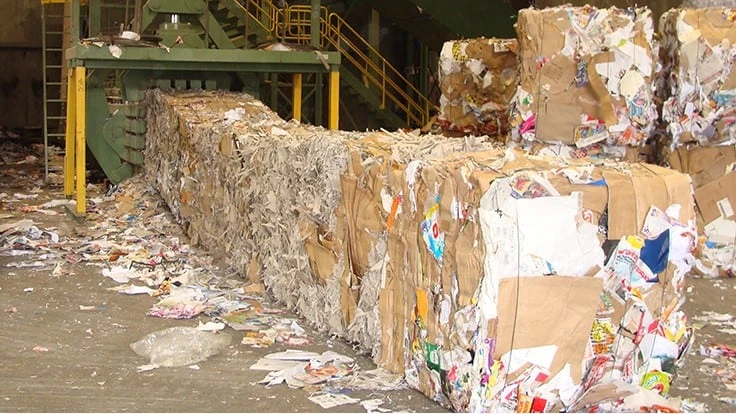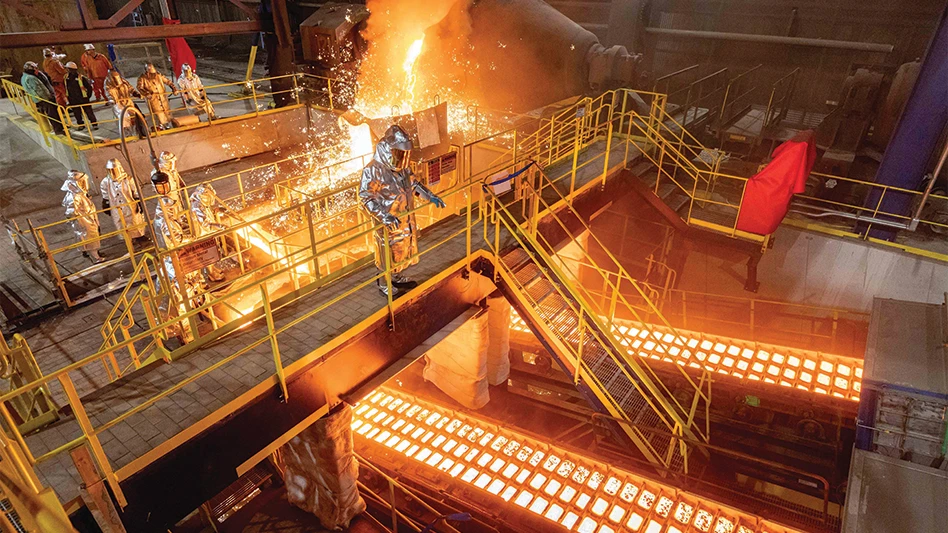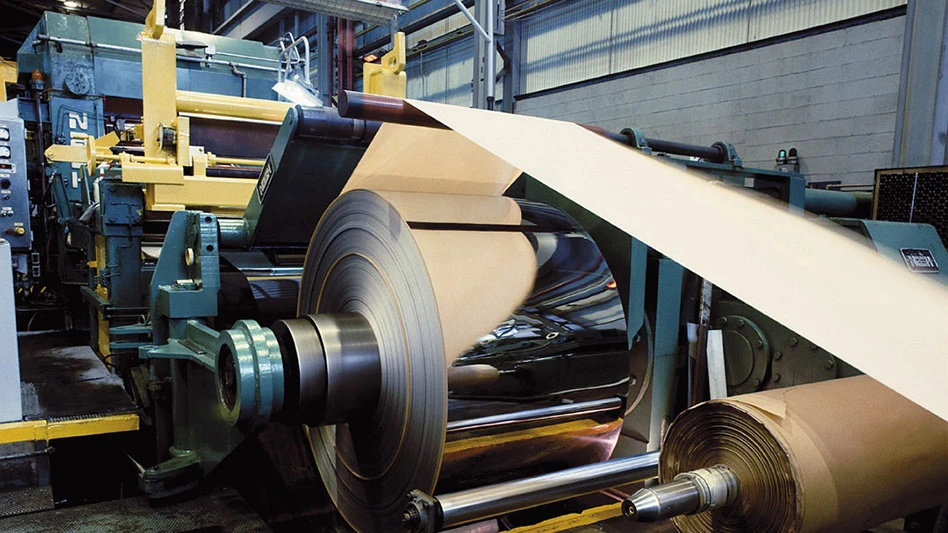
Photo by Recycling Today staff.
Green is in, and policymakers around the world are including recycling as part of their carbon emissions reduction strategies. Paper mills in nations with a deficit of scrap paper, however, may soon find themselves unable to help close the recycling loop if transboundary regulations get in the way.
Panelists who took part in a roundtable discussion that was part of the late June online International Recycling Week event expressed an understanding of the sentiment that consuming recyclables closer to home has benefits. As Marc Ehrlich of Switzerland-based Vipa Group commented, however, “When you want to restrict the movement of a commodity [you] have people who lose from this constraint.”
Of particular concern to the panelists was the European Commission taking possible measures to restrict the exporting of scrap materials (including paper and metal) under Basel Convention waste regulations. “The Basel Convention will classify recovered paper as a waste, but we experts in this field [believe] totally the opposite of that. We believe it is recyclable material, with specifications,” stated Ehrlich.
“If every country should restrict the export of materials, it can be a boon for many countries, but equally it would be a curse for others,” remarked Vikas Mahajan of Mahajan Recycled Resources. The India-based recycler and trader said that when China cut off access to recovered fiber at the start of 2021, prices for paper [there] “shot up to $600 per ton, until they started getting recycled-content pulp from other nations, then it went down to $200.”
Ehrlich said restricting exports in Europe will lower scrap paper prices, and gave this summary identifying winners and losers: “You have some winners—the people who can benefit from a cheap commodity so they can make unfair competition [with] the rest of the world. On the opposite end, you have people who lose from this constraint. In this field, the losers are the municipalities that will have to pay much more subsidy for the collection of the recycling and the recycled paper. You have the taxpayer; we will have to pay more to support [recycling]. And at the end of the day this is all going to subsidize paper mills that are located in the ‘right’ place.”
“We can’t rely on old supply chains and old assumptions,” added roundtable moderator Wade Schuetzeberg of Netherlands-based Way Forward Enterprises BV. He said China began "thinking about this direction 15 years ago. They can and are living without imported fiber. The markets are very adaptive. We need to, in order to meet the new demands for recovered fiber, also learn to adapt.”
Ehrlich also expressed reservations about the volume of new containerboard capacity coming online in Europe and North America. “It seems like every morning, one paper mill owner is having a great idea, which is to convert graphic paper or newsprint capacity into board packaging capacity,” he stated.
“The first owner who had this idea, it was a brilliant idea,” Ehrlich continued. “Now that we’re about 200 paper mills later, I’m wondering if there won’t be a surplus of capacity very soon in Europe and the United States.”
Sami Al Safran, CEO of Saudi Arabia-based containerboard producer MEPCO, said consuming scrap paper closer to where it is generated is a worthwhile environmental and ecological goal, and his company has been pursuing it in the Middle East region. He added, though, “The challenge is the balance between the supply and demand.” Regarding the recovered fiber surplus in Europe or North America, “Should it go to the trading network or to the landfill?” he asked.
Mahajan said India (including his company) is striving to boost its own scrap paper collection. However, “Today, in 2021, we have [at least 11 paper] machines coming online in India. Where will they get the fiber from? They’re going to have to keep a balance between domestic as well as from imports.”
The quality of recovered fiber seems to be improving globally, in part because nations have mandated and are enforcing export and import contaminant standards, said panelists.
Every country has its standards, said Mahajan, and “plants overseas are making an effort to cut down on the nonrecyclable content.” He said the current lofty prices of recovered fiber benefits material quality. “Every [sorting] step comes with a cost. So, at $50 [per ton] it was a losing proposition for a sorter. Today, when talking above $200 per ton, that cost allows a sorter to take out the nonrecyclable content and export at volume.” No one wants a container to be diverted at the port, he added.
The high prices kicked in as COVID-19 caused retailers to lose business and home deliveries to escalate, causing another topic of conversation for the panel. The situation “created a big stress on supply” in 2020, said Safran, with even old corrugated containers (OCC) sometimes heading to landfills.
“We need to go back to education to educate people to do better recycling at home, otherwise, a lot of material will go to landfill,” said Ehrlich. He cautioned that such education “takes five to 10 years to [create and maintain] better habits.”
International Recycling Week was organized by United Arab Emirates-based Waste & Recycling Middle East & Africa magazine.
Latest from Recycling Today
- Regenx receives funding from the National Research Council of Canada Industrial Research Assistance Program
- GFL Environmental Inc. to sell majority stake in Environmental Services business to Apollo, BC Partners
- SPR launches automated bifacial solar panel recycling line
- MBA Polymers UK offers ABS to global market
- Tariffs likely rising on inbound steel, aluminum and copper
- Carpet recycling fees to rise in California
- CMC suffers losses in late 2024
- Nonferrous recyclers: Where do you rank?





